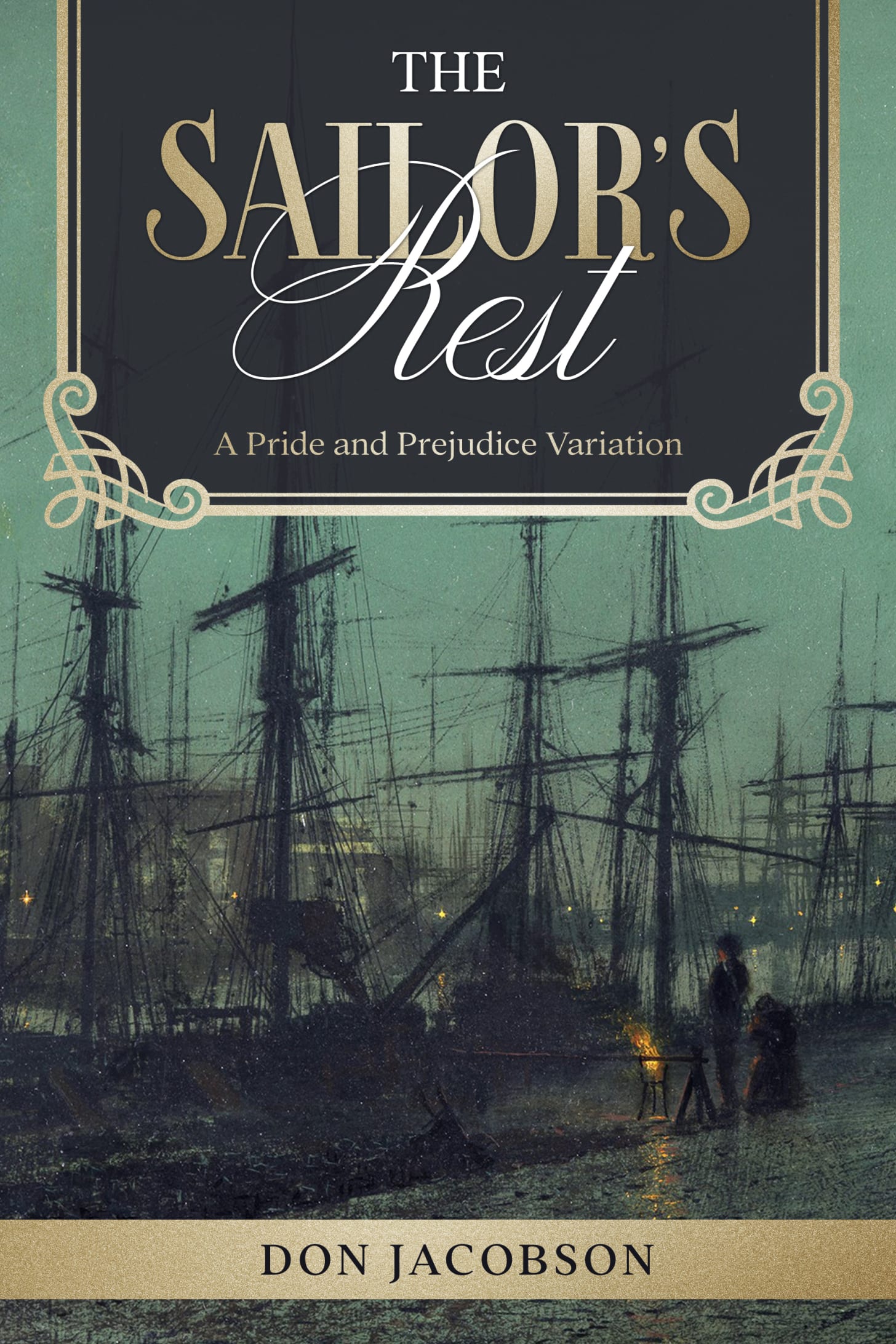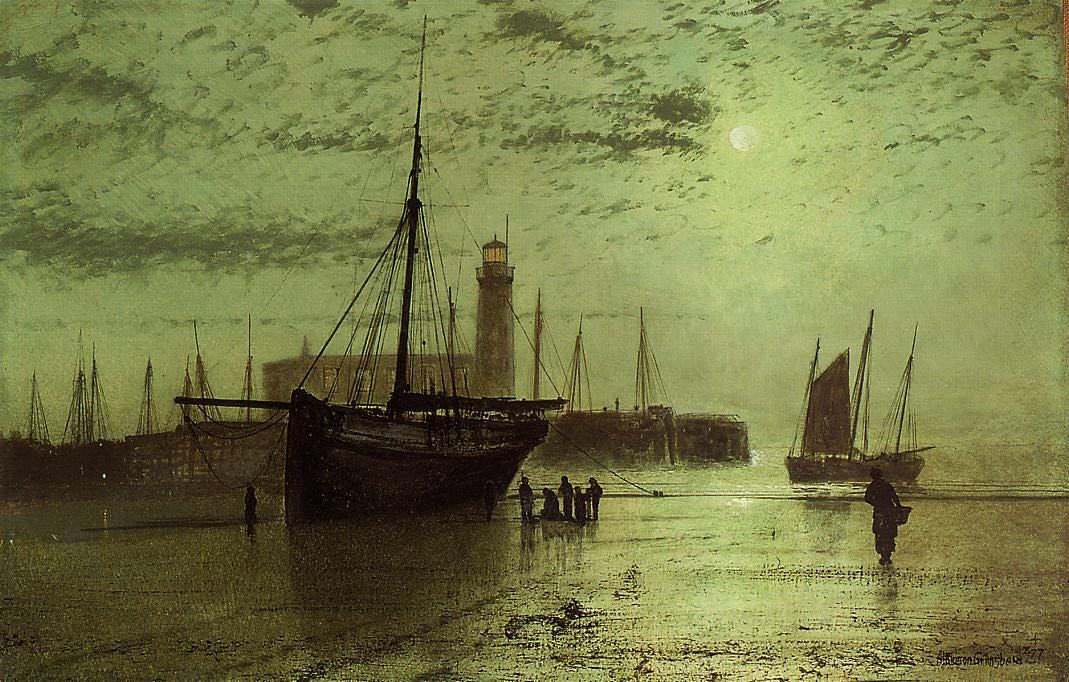This essay first appeared in Savvy Verse and Wit on March 30, 2023
Many Pride and Prejudice variations find their scenic context—if not plot rationale—in the hills surrounding Longbourn and Pemberley, the rooms of Austen’s notable estates or adjacent gardens, or town drawing rooms and parks. This works perfectly when the focus solely rests on the complex ballet between the undeclared lovers as they seek to overcome social barriers and their notions. References to the outside world are limited to requisite nods to snobbery and money.
On the other hand, I see Jane Austen as a writer of historical fiction who did not feel any need to explore the framework in which her stories existed because her readers knew the 4-1-1 about Regency society and world history. The horizons were nearer, and the crowds though which one moved were smaller. Austen’s power as a commentator about the human condition in the first decades of the Eighteenth Century comes from writing for an audience who knew the context.
After completing the final book in the Bennet Wardrobe series, I cast about for a story idea upon which I could focus my experimental impulse. As readers have seen, I am a fan of solid plotlines that allow the characters to reveal more about themselves than is possible in a conversation over a cup of tea during a morning call.
That led me to a logical pairing of Pride and Prejudice and Persuasion: Austen’s novels that feature the strongest four protagonists. As I began The Sailor’s Rest, I considered the effect of these two pairings in the same book without falling into the trap of making Frederick and Anne the Bingley and Jane of the work: present and important to Elizabeth and Darcy in a literary sense, but not crucial to the outcome. I am of the school that Darcy’s making of amends in the Bingley/Jane scenario seeded the ground for Elizabeth’s final understanding of his character after he resolves the Lydia/Wickham imbroglio.
This worry led me to consider Persuasion before P&P. Persuasion’s setting is Somersetshire, the coastal county hovering above the Bristol Channel. Hertfordshire and Derbyshire are distant from the English Channel and North Sea and would have been unnatural for Frederick Wentworth’s tale. Thus, moving Darcy, Elizabeth, and Anne into Wentworth’s and Croft’s worlds seemed easier.
The captain’s realm is one of water and war. Austen asserts that Wentworth returns a successful and wealthy frigate captain after the seven-year separation. What she does not explore is how he arrived at that station. That led me to conclude that a naval story, where Wentworth’s life provides the context and thus is thoroughly unfamiliar with the other main characters, would best serve my goals.
In The Sailor’s Rest, the book’s second act plays out on the Mediterranean stage. We see Darcy and Wentworth in their guises of Will Smith and Fred Tomkins seeking to survive captivity aboard the British frigate Persephone. Anne and Elizabeth, protected by Admiral Alfred Croft and Mrs. Sophie Croft, are pursuing the other ship aboard the frigate Naiad.
Setting The Sailor’s Rest in small spaces, be they a private dining parlor, a coach and four, or a frigate, would allow the characters to rub tightly together until they step away to find that space their hearts and souls require to breathe. This is my literary application of the architectural philosophy of compression and expansion. The ocean’s emptiness allows the already betrothed couples—yes, I decided that another dance about how ODC or F & A came together would not illuminate anything—to reflect on their respective loves and voice their deepest fears. Darcy can no more jump on his stallion’s back and ride across the fields than Elizabeth can “scamper” to Oakham Mount. Both must deny physical outlets and face what besets them.
Before closing, I wish to emphasize that the battle sequence in the middle of the book is essential for readers to fully comprehend how different, yet how similar, Wentworth and Darcy are to each. They are decisive men, needing to determine a course of action and not quail from it, although with different potential outcomes. As Wentworth smiled to Darcy, “One difference I would be happy to point out is that your success is not contingent upon blasting holes in a neighboring estate.”
&&&
I am offering ten copies of the e-book of The Sailor’s Rest through a random drawing. Please use this link to enter.
http://www.rafflecopter.com/rafl/display/9d1fdafb1/?
This link will send you directly to the book’s page in your local Amazon site.
https://mybook.to/SailorsRestPandP
&&&
Please enjoy this excerpt from The Sailor’s Rest. © 2023 by Donald P. Jacobson. Reproduction prohibited. Published in the United States of America.
From Chapter 18
Naiad, NW of Port Mahon, April 9, 1815
The evening beneath the snowy canvas sky was magical. Inky channels rippled between creamy billows, recalling the Abbey, albeit made from air, thread, and imagination. The restless tacking as the ship worked its way north through the Balearic Sea toward Toulon pushed the Milky Way’s starry belt first to one side and then the other of the bowsprit’s black finger scribing the moonless sky. The sirocco had diminished, although the wind blew warm and humid from the southwest. Clouds rose above the waters but fled before the ship, making Naiad’s passage smoother.
Anne and Elizabeth stepped past the marine guarding the great cabin and made their way forward. A shadow whisper walked behind them, never coming too close to violate their privacy but never too distant to be unable to rescue them.
The women strolled arm-in-arm along a deck slightly heeled over in concert with the starboard tack. The crew that kept Naiad working toward their goal was invisible in the night’s gloom. Seen from above, the ladies floated, their light gowns blending seamlessly with the deck boards. They appeared like bergs calved from the canvas peaks above and drifting along the moon-darkened surface. This image was only a figment for the waters through which Naiad drove had never seen ice in this age.
The two misses were not unseen, just unremarked upon, by the silent watchers.
Passengers they may have been, that was true: what would have been equally valid was that the Naiad’s crew owned the women’s quest as their own such was the nobility of the mission. Through dim nights on the gundeck, before they crawled into the hammocks, they had heard stories told by those who had their letters of Camelot’s knights. In those tales, the damsels in distress were held in dark castles or deep caves and guarded by fell beasts and witch’s spells.
Their quarry fled before them, trailing its coat upon the restless sea. ’Twas manned by those unknown. That unfamiliarity allowed the granting of malicious traits bordering on the ancient images of men who kicked the law to the side and raised piracy’s black banner. None were good; all were evil and examples of what men can become if not ruled by the Articles of War. They were a scourge, a cancer in civilization’s innards.
In such thoughts lay the courage sailors need when facing water-borne war. Boarding parties would crouch below railings waiting for the order to leap onto the opposing ship. Contrary to instinct, they would clamber over the boarding nets, running toward, not away, from mayhem. Mates fighting alongside on all compass points gave surcease. Officers would make for the quarterdeck and the flag. Cutlass-bearing, mallet-wielding sailors—peasants they were not, instead standing on the field like King Harry’s men-at-arms—would clear the forecastle and venture below decks.
They doubted that the men of their target—even though British sailors—would fight with the same ardor as they. After all, was there a better fighting vessel than the Nimble Nymph: her figurehead soaring above the waves clad in gilt and calcedony? Perhaps they were deluded, but if it was fantasy, then it was one familiar the world over and held tightly by frightened men throughout history. Otherwise, they would quail at the thought of intentionally wading into a clutch of desperate sailors fighting for their lives.
There was one complication and not a minor one. While Naiad had bypassed Gibraltar, a messenger boat had raced from the harbor bearing the news that Napoleon had fled his gilded cage on Elba and was marching toward Paris. With the Emperor on the loose, the reconstituted French Royal Navy had raised the Tricoleur. Although the British had reduced that service across twenty-plus years, it could still float many a frigate to harry unsuspecting commerce and bring death and destruction to British warships doing their duty. That added an element of uncertainty to their pursuit of Persephone.
Somewhere, out of sight, their prey waited. Whether Naiad would be the hunter or the hunted was a story yet to be written. The coming confrontation would be neither civilized nor simple.
However, at this moment, suspended between darkling waters and the brilliant sphere punctured by crystalline points, contemplative peace was known by those who strolled on the deck.






Interesting excerpt! Sounds like it is going to get exciting!